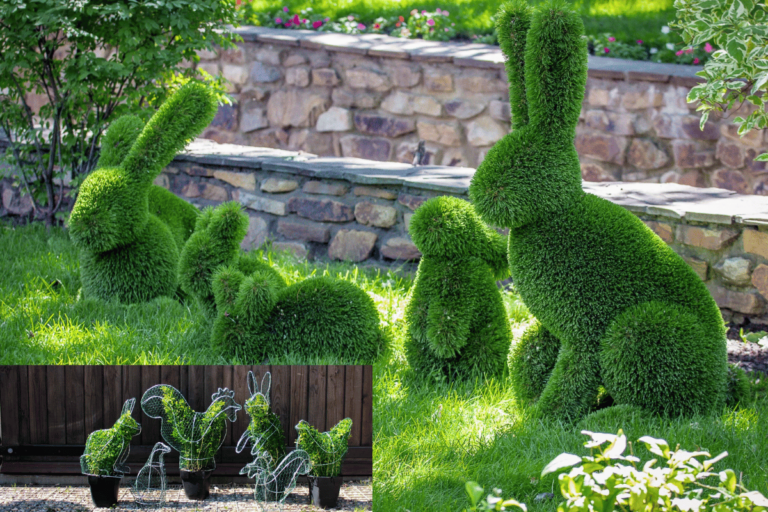Topiary gardening means that plants are pruned and trained into various forms like animals, geometric shapes and intricate designs. This practice has a long history, tracing back to ancient Roman gardens where topiaries made formal landscapes with many details.
The topiary garden gained prominence during the Renaissance, mainly in Italian and French gardens, where they became an indication of wealth and culture. The meticulous designs and precise pruning techniques characteristic of topiaries at this time reflected the cultural and artistic aspects. The European nobility and royalty had topiary parks meant to display their status.
In England during the 17th-18th centuries, topiary was practised, after which it became part of garden designs. English classic garden featured traditional shapes and imaginative works, enhancing charm and beauty in the landscape. Topiaries remain one of the most popular gardening trends today because they require artistic skills and horticultural acumen since these can be seen everywhere, from small private spaces to large public parks worldwide.
Ways of creating different shapes in Topiaries
Creating different shapes in topiaries may include selecting suitable plants, training, and regular pruning exercises. Here are some guidelines for mastering how this type of gardening is done:
Select Suitable Plants: Opt for appropriate species among boxwood yew privet and holly within your garden to become good candidates for shaping into various forms typical for topiary plants such as animals or pyramids. These plants have dense foliage and flexible branches. They are easy to prune, efficiently responding favourably towards such manipulation tactics, thus giving you even some years before achieving the desired shape.
Boxwoods: Dense evergreen shrubs; very versatile
Yews: Dark green needle-like leaves; can take heavy trimming
Privets: Fast-growing with tiny leaves; are perfect for hedges and topiaries.
Holly: Adds texture; can be used in many shapes.
Training and Pruning Techniques: Use wireframes, stakes or pruning guides to shape a plant into the needed form. Wire rods and strings will help you create a visual guide for easy shapes like spheres or cones. On the other hand, use only wire frames when shaping complex forms since they provide support and structure.
Wire frames are necessary to produce intricate designs that result in uniform shapes.
Stakes and Strings: These are useful for creating simple geometric shapes without bothering about complicated patterns.
The plant should be pruned from time to time so that it maintains its shape while growing dense. It is advisable to make sharp, clean cuts with a sharp pair of scissors. First, remove any dead, diseased or broken branches from the tree. Cut away some of the outer foliage to produce the desired shape. Make minor gradual cuts that won’t damage the plant but allow it to grow again.
During trimming sessions, use sterilized pruning shears to cut at an angle that won’t leave ragged edges on your plant stems.
Gradual Trimming: This helps avoid shocking the plant and causing damage while increasing the accuracy of the shaping process.
Advanced Techniques: To achieve advanced topiary shapes, you should consider sharing and pinching techniques. Shearing requires cutting off part of the outer leaves so as not to lose the general design, whereas pinching entails the removal of single buds or shoots, leading to fuller growth around this area. Consequently, there is more control over refinement than any other method available in topiary, making it possible for one who does this work professionally to have greater precision when moulding their design into something beautiful before finishing up by getting rid of some extra pieces here, thus resulting in more artistic overall.
Shear – Trim back sides just enough till they appear neat.
Pinch – This technique promotes bushiness plus allows for accurate detailing.
Maintenance: To keep the topiary in good condition, trim it at least twice a year, typically in late spring and summer. The plant’s health should be monitored while observing signs of pests, diseases or nutrient deficiencies. Provide water and fertilizer for the topiary that will ensure healthy growth.
• Seasonal Pruning: Keeps the shape of the topiary and promotes new shoots
• Health Monitoring: Conduct regular checks for pests and diseases to prevent any damage
• Watering and Fertilizing: This will facilitate uniform growth as well as foliage vibrancy
Conclusion
If you follow these techniques with patience and precision, you can make gorgeous shapes with topiaries that bring artistry and elegance into your yard. Topiary gardening allows for creativity in how simple geometric forms can be chosen or highly complex designs can be created, improving one’s outdoor space.
Explore More Gardening Tips and Ideas
- Growing Bonsai: Tips for Miniature Tree Enthusiasts
- Buying Bonsai: Tips for Selecting Your Perfect Tree
- Bonsai Potting: Essential Tips for Tree Care Success
- Bonsai Maintenance: Essential Care for Tiny Trees
- Mastering the Art of Shaping Bonsai: A Beginner’s Guide
Source: The Art Of Topiary


